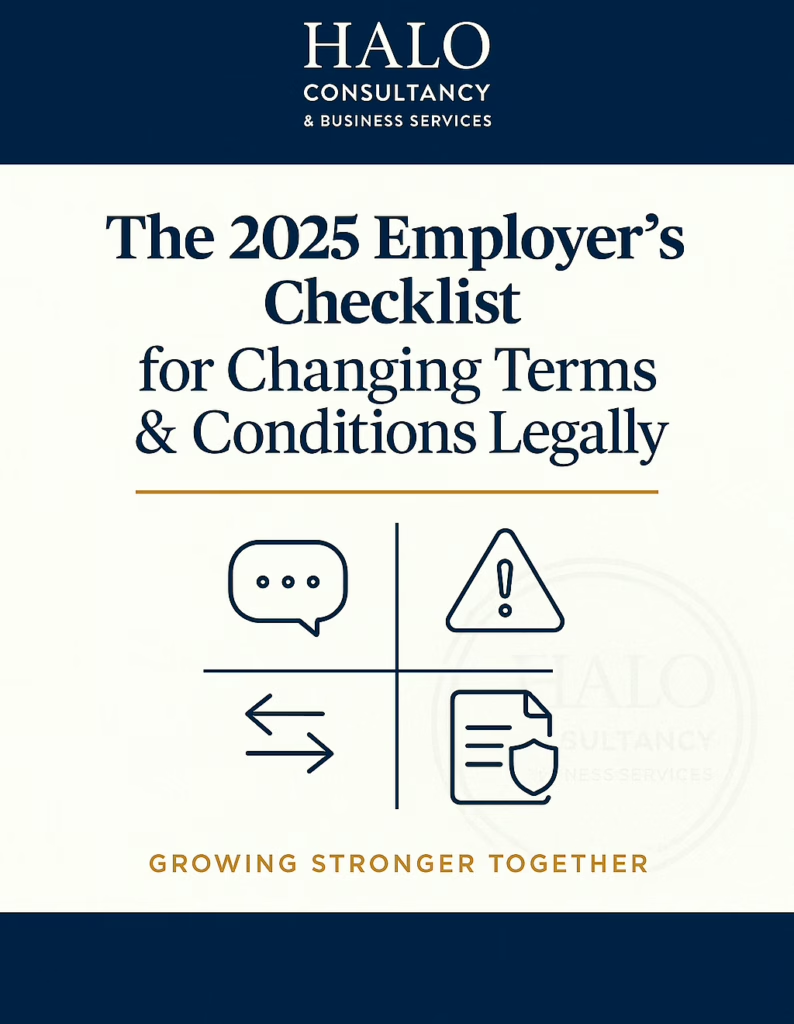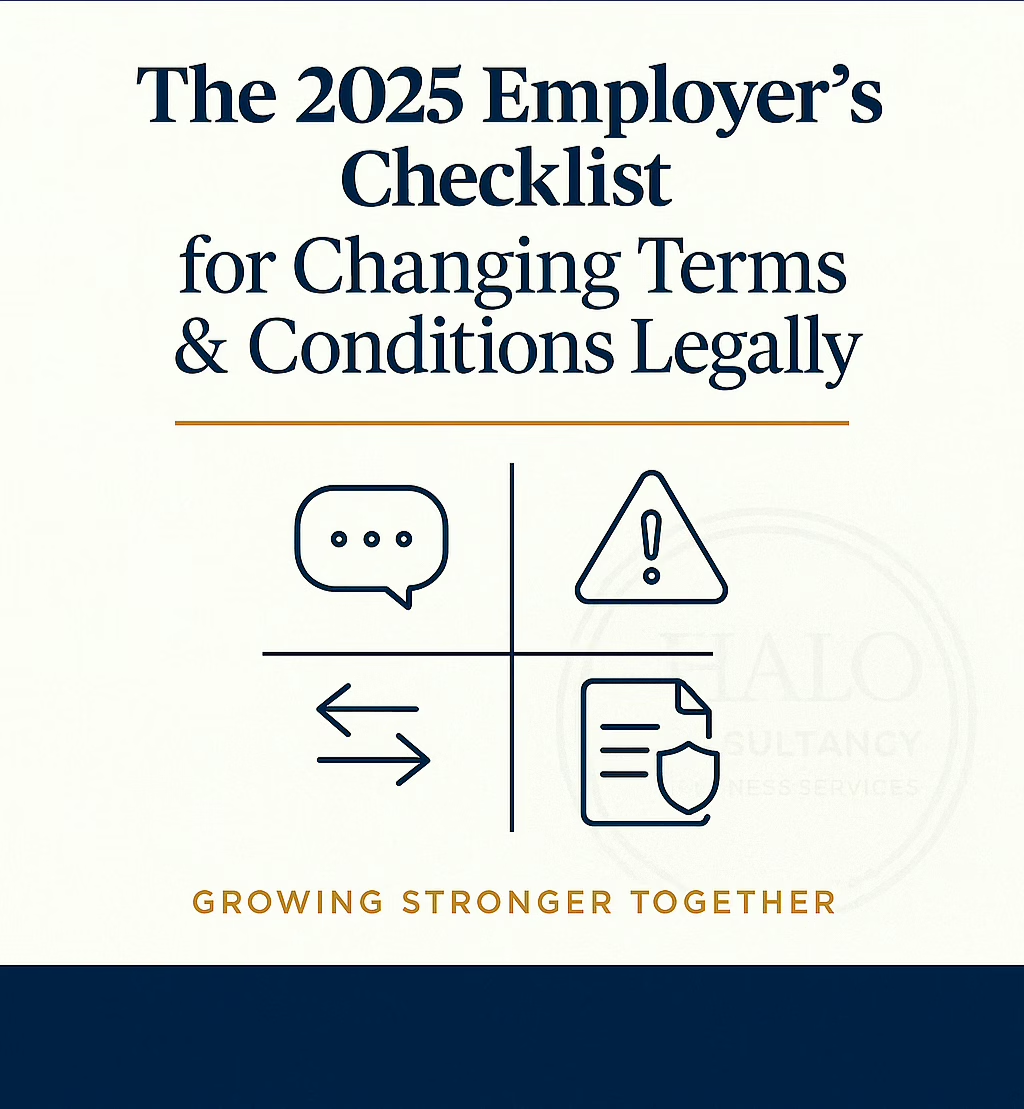Big changes are coming — and they’ll reshape how employers can change employment contracts.
Under the proposed Employment Rights Bill, due for implementation in October 2025, it will become automatically unfair to dismiss an employee for refusing changes to their terms — unless you can prove your business meets the “financial collapse” exception.
This means:
No more ‘fire and rehire’ without risk.
No more relying on weak contract clauses to push through changes.
No more quick fixes that could lead straight to tribunal.
To help SMEs and HR professionals avoid risk, we’ve created a step-by-step checklist you can use when considering any change to employee terms — from reducing hours to restructuring pay or duties.
Changing Terms & Conditions: The 8-Step Employer Checklist
Use this checklist to reduce legal risk and stay ahead of 2025 legislation.
- Initial Business Case & Impact Assessment
- What exactly are you trying to change?
- Why is this change necessary (cost, restructuring, operational need)?
- How many employees are affected, and how will they be impacted (positively/negatively)?
Tip: Put this in writing — tribunals will expect to see a clear rationale.
- Review Current Contracts
- Are there any valid variation clauses in your contracts?
- Do they cover this type of change (e.g. duties, pay, location)?
- Are the clauses enforceable, reasonable, and still compliant under the new law?
Note: Even well-drafted clauses may not protect you post-Bill.
- Communication and Consultation
- Begin meaningful consultation with staff and/or representatives.
- Be clear, open, and allow time for feedback and negotiation.
- Keep records of every stage.
This isn’t a tick-box exercise – rushed or shallow consultation will not hold up.
- Seeking Agreement from Employees
- Explore incentives or phased approaches to get buy-in.
- Tailor your approach to individuals where possible (e.g. flexible options for parents, carers).
- Don’t ignore objectors — they’ll be the ones you face at tribunal if you push through without agreement.
- Applying the “Financial Collapse” Exception
- Can you demonstrate that the business would face serious financial harm without the changes?
- Do you have clear financial evidence (forecasts, cashflow statements)?
- Would an external auditor agree with your case?
Section 104I(4) sets a high bar. Use this only with rock-solid evidence.
- Consider Alternative Routes
- Can you introduce changes gradually?
- Can you use natural attrition, restructure roles, or offer voluntary exits?
- Is redundancy a more legally secure route?
- Documentation and Risk Management
- Keep detailed notes of every meeting and communication.
- Document feedback, objections, responses, and agreed terms.
- Log all versions of the revised contracts and who has signed what.
If it’s not written down, it didn’t happen – especially in front of a tribunal.
- Transparent General Communication
- Keep employees informed at every stage — avoid surprises.
- Be mindful of personal situations — show compassion and flexibility.
- Ensure consistency across the business, but allow for tailored solutions where reasonable.
Next Steps for Employers
- Request our full Contract Change Compliance Checklist (2025 Edition).
- Book a strategy session to audit your current employment contracts.
- Subscribe to The Halo Perspective podcast for updates as the law develops.

